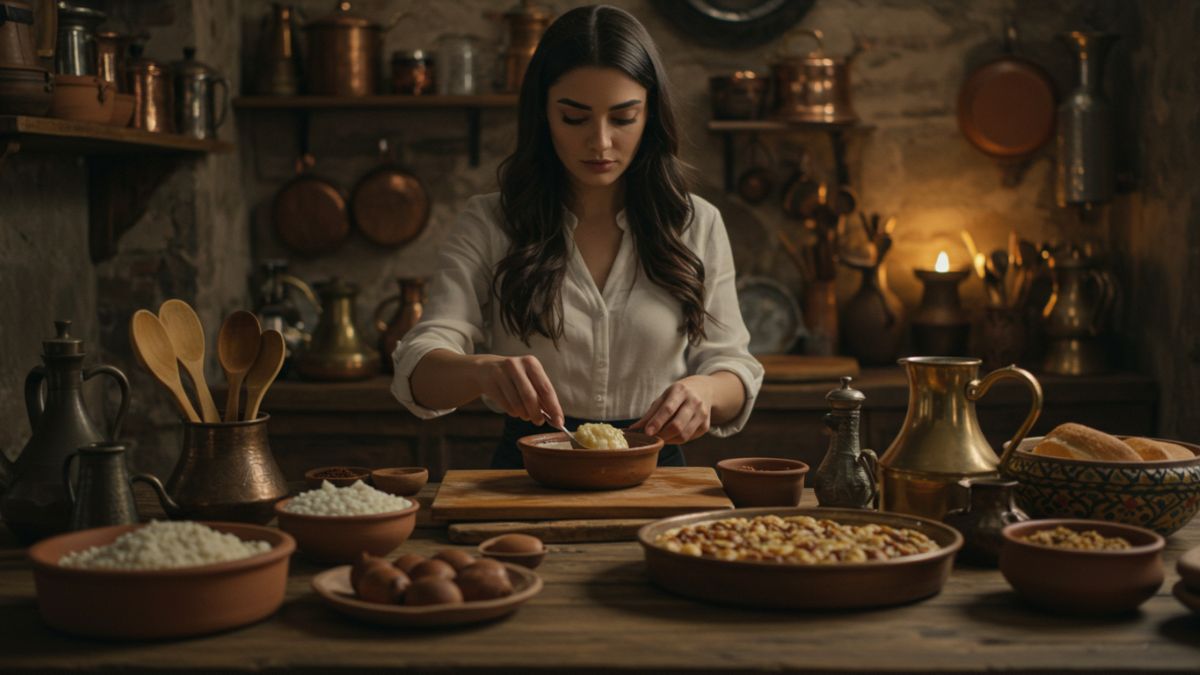FOOD AND DRINKS
Meatless Casserole Dishes: A Plant-Based Culinary Journey

A plant-based diet does not mean the combination of bland salad and tofu anymore. The increasing popularity of plant-based food items has brought a culinary shift. Your plant-based food platters can be as tasty as non-veg food items if not more. You can find a wide range of quick but tasty recipes for meatless casserole dishes nowadays. So, if you are thinking about switching to a plant-based diet for health or environmental reasons, now is the right time to do so. You will find a whole new world of delicious food platters that only include plant-based ingredients. So, let’s dive deeper into this vegan food world to develop a better understanding.
Switching to Meatless Dishes
If you are a regular non-veg eater it can be difficult to switch to plant-based food in one day completely. You need to take your time to switch from a non-veg to a vegan food diet. First start with one plant-based meal a day. You can try out different vegan dishes for that one meal. It will give you a change in your taste buds and you can find out what type of vegan dishes you like the most. Once you are familiar with plant-based food items you can understand the best alternatives for your favourite meals. Try out plant-based meat alternatives for your dishes. This way you will not be able to feel the change much. On an important note, don’t try to switch all the things at once. For example, first try out plant-based meat alternatives and then you can go for dairy alternatives. Trying out all these things at once can mess up your routine. So, take it slow and you will get there eventually.
Variety of Meatless Casserole Dishes
You will not believe how versatile the meatless alternatives can be. You can also add your culinary creativity to enhance the taste and flavour. For a summer meatless casserole dish, you can add a variety of summer vegetables like juicy tomatoes, cold cucumber or zucchini and colourful leafy greens for added flavour. For a winter side dish, you can make a hot curry with root vegetables and mushrooms. You can also make different mouthwatering dishes from meat and seafood alternatives to bring a tasty twist to your meals. If you are a lover of seafood, your alternatives for that as well. You can experience the similar taste of tuna or crab from the dishes made with different types of algae, plant protein and chickpeas. So, it’s time you stop worrying about the flavour of the meatless casserole dishes and enter the flavourful plant-based world.
Nutritional and Environmental Benefits
Plant-based casserole dishes mainly include a range of vegetables, peas, lentils, mushrooms, and tofus. These dishes are rich in essential vitamins, minerals and fibres which are greatly beneficial for your health. It will help you to boost your immune system and keep you away from different types of diseases. Additionally, by eliminating animal products you can also contribute towards environmental sustainability.
FOOD AND DRINKS
Exploring the Truth Behind Chinatown Hawker Leftovers Consumption

In the vibrant alleys of Singapore’s Chinatown, hawker centres are known for serving up affordable, flavorful dishes that reflect the country’s multicultural heritage. However, a topic that often goes undiscussed is the growing observation of Chinatown hawker leftovers consumption. This behavior—where individuals consume leftover food from trays or tables—raises important questions about food waste, poverty, ethics, and social responsibility.
Rather than a simple act of scavenging, this phenomenon reflects broader societal trends that deserve deeper attention and understanding.
Hawker Centres: A Cultural Symbol of Community and Cuisine
Hawker centres are iconic in Singaporean life. These open-air food courts bring people from all walks of life together over shared meals. Dishes range from chicken rice and satay to laksa and nasi lemak. Yet, while meals are often cheap and satisfying, the fast-paced nature of dining leads to considerable food waste.
This waste becomes visible at the end of each day—leftover noodles, untouched rice, or barely eaten meat dishes left behind by hurried diners. It’s within this environment that Chinatown hawker leftovers consumptions has quietly emerged.
Why Does Chinatown Hawker Leftovers Consumption Happen?
There are several interconnected reasons why this practice is becoming more noticeable:
1. Economic Challenges Among the Elderly and Poor
Despite Singapore’s wealth, economic inequality exists. A segment of the population—especially elderly citizens without family support or financial aid—turns to hawker centres for discarded food. For them, Chinatown hawker leftovers consumption is not a choice made lightly, but often a matter of survival.
2. Minimizing Food Waste
With global conversations around sustainability gaining momentum, some individuals are making statements against food waste by consuming or redistributing leftovers. Though not widespread, this approach signals a grassroots form of environmental activism.
3. Cultural Factors and Practicality
In a culture that values resourcefulness, it’s not uncommon to reuse and repurpose food. While most locals may not engage in this practice openly, there’s often silent empathy or tolerance toward those who do—particularly the elderly or visibly struggling.
The Social Dilemma: Hygiene vs Humanity
Many onlookers express concern over the hygienic risks of eating leftovers, especially food that has been left in public spaces. And these concerns aren’t unfounded—bacteria and germs thrive in improperly stored food.
However, the moral conversation complicates the issue. Is it right to judge someone for eating what would otherwise be thrown away? Should hawker staff intervene when they see someone consuming leftovers, or should compassion take precedence?
The discomfort surrounding Chinatown hawker leftovers consumptions speaks volumes about how society views poverty and dignity.
Food Waste in Singapore: A Broader Problem
In 2023, Singapore generated over 800,000 tonnes of food waste—an alarming statistic for a city with limited landfill space. Hawker centres contribute significantly to this figure due to large volumes of uneaten food.
The practice of leftover consumption, while controversial, sheds light on the inefficiencies in our food systems. It serves as a silent protest against throwing away perfectly edible food, especially in a country with the resources to do better.
Are There Legal or Regulatory Issues?
At present, Singapore does not have laws specifically prohibiting the consumption of leftovers from public food courts. However, hawker centre staff and managers often discourage the behavior for health and image reasons.
While the state emphasizes cleanliness and public health, there is a growing realization that more inclusive policies are needed to support low-income individuals while also addressing food waste.
What Can Be Done to Reduce Both Waste and Need?
Rather than condemning Chinatown hawker leftovers consumption, perhaps the more productive approach is to find solutions that reduce both food waste and economic strain. Here are a few possibilities:
1. Food Donation Networks
Setting up systems where untouched or excess food from hawker stalls can be safely donated to shelters or food banks could help reduce waste and provide meals to the needy.
2. Portion Customization
Allowing customers to choose smaller portion sizes may reduce leftover food.
3. Community Fridges
Installing community refrigerators near hawker centres—where vendors or diners can leave untouched, safe food—can help those in need without the stigma of eating off tables.
4. Public Awareness Campaigns
Educating the public about the consequences of food waste and promoting kindness toward vulnerable groups can reduce judgment and foster empathy.
Personal Stories: The Human Face Behind the Issue
One 72-year-old retiree in Chinatown shared that he eats leftovers not out of shame, but because his pension barely covers rent. “I don’t want to steal. I don’t want to beg,” he said. “If someone leaves half their rice and it’s still warm, why waste it?”
These voices remind us that Chinatown hawker leftovers consumption isn’t just a social issue—it’s a human one. It demands not just policies and hygiene protocols, but understanding and compassion.
Changing Perceptions Through Action
To truly address this issue, society must do more than raise eyebrows. Practical steps toward sustainability, support for the elderly, and inclusive dialogue are necessary. Instead of hiding the reality of Chinatown hawker leftovers consumptions, it may be time to face it—honestly, ethically, and with purpose.
Conclusion: A Call for Sustainable and Compassionate Solutions
Chinatown hawker leftovers consumption is a topic that sits at the intersection of poverty, sustainability, and public health. While the act may be viewed as unhygienic or even undignified, it also reveals systemic gaps that require immediate attention.
Rather than allowing the issue to remain in the shadows, we must confront it with empathy and innovation. Through collective effort, we can transform hawker centres from places of waste into spaces of community care, sustainability, and shared responsibility.
FOOD AND DRINKS
Pizza Edition: A Tasty Celebration of Slices Around the World

Pizza is more than just a meal—it’s a global sensation that brings people together. In this pizza edition, we explore how a simple flatbread topped with sauce and cheese evolved into a universal favorite. With countless variations, creative twists, and passionate fans across the globe, pizza has earned its spotlight. This edition will walk you through the best of pizza culture, from classic styles to modern interpretations.
What Makes This Pizza Edition Special?
Unlike ordinary food articles, this pizza edition dives deep into the heart of pizza culture. It’s about more than toppings—it’s about the traditions, creativity, and community that surround the world’s favorite comfort food.
Whether you’re a thin-crust purist or someone who loads up on pineapple and hot sauce, this edition has something for every kind of pizza lover. Get ready for a delicious deep dive.
The Origins of Pizza: A Story Worth Telling
No pizza editions would be complete without mentioning pizza’s rich history. Although flatbreads with toppings existed in ancient civilizations, pizza as we know it began in Naples, Italy. The classic Neapolitan pizza featured minimal ingredients but maximum flavor: dough, tomato sauce, mozzarella, and fresh basil.
As pizza spread globally, each region added its own twist, giving rise to the many different styles we now enjoy. From Roman street pizza to the thick Chicago pie, each version reflects local tastes and traditions.
Pizza Styles Across the Globe
Neapolitan – The Original Slice
Born in Italy, Neapolitan pizza is thin, soft, and blistered by wood-fired heat. The ingredients are simple but fresh. This style is all about balance and authenticity.
New York Style – Street Food Royalty
Famous for its wide, foldable slices, New York-style pizza is a go-to for city dwellers. It’s known for its thin yet chewy crust, rich tomato sauce, and generous cheese topping.
Detroit Style – The Crispy Corner King
This rectangular pizza is thick, airy, and baked in a steel pan. Its cheesy edges form a crispy crust, and sauce is often layered on top. A true Midwestern gem.
Chicago Deep Dish – A Hearty Meal
Chicago-style deep dish is more like a pizza pie. The crust is buttery, and the filling includes layers of cheese, meat, and chunky tomato sauce. It’s rich, indulgent, and impossible to eat on the go.
Japanese Okonomiyaki Pizza – Fusion at Its Finest
In Japan, some pizzerias mix local flavors with Italian tradition. One unique variant includes okonomiyaki toppings—cabbage, mayo, and bonito flakes—on a thin pizza base.
Unique Toppings Featured in This Pizza Edition
One of the reasons pizza remains so popular is its versatility. In this pizza edition, we highlight some wild and wonderful toppings from different cultures.
-
Tandoori Chicken: A spicy Indian twist that’s full of bold flavor.
-
Kimchi: Korean fermented cabbage adds tang and crunch.
-
Pesto & Artichoke: A Mediterranean delight for gourmet lovers.
-
Fried Egg: A breakfast-style topping that’s rich and savory.
-
Figs & Prosciutto: Sweet meets salty in this Italian-inspired combo.
Toppings aren’t just extras—they’re the canvas for culinary creativity. Every topping adds personality to the pie.
DIY Pizza Edition: Make Your Own at Home
Creating your own pizza edition at home is both fun and satisfying. You don’t need a fancy oven or expensive tools—just good ingredients and a little passion.
Quick Homemade Dough Recipe:
-
3 cups flour
-
1 packet instant yeast
-
1 tsp salt
-
1 tbsp olive oil
-
1 cup warm water
Mix all ingredients, knead until smooth, let rise for an hour, and roll it out. Add sauce, cheese, and your favorite toppings. Bake at 475°F (245°C) for 12–15 minutes.
You can even get creative with the base—try cauliflower crust, whole wheat, or stuffed edges for variety.
Pizza and Culture: A Slice of Togetherness
Pizza plays a role far beyond the dinner table. It’s a symbol of celebration, comfort, and community. Think of how many birthdays, movie nights, or late-night chats have involved pizza.
In many cultures, sharing a pizza is a social ritual. It brings people together, no matter their age or background. That’s why the pizza editions is more than food—it’s about experiences and connections.
Health-Conscious Options in the Pizza Edition
Yes, pizza can be healthy! In this pizza edition, we’re not ignoring the nutrition-conscious crowd. Thanks to modern innovation, pizza can now be part of a balanced diet.
-
Gluten-Free Crusts: Perfect for those with gluten sensitivities.
-
Dairy-Free Cheese: Plant-based options that melt beautifully.
-
Veggie-Heavy Toppings: Load up on spinach, tomatoes, mushrooms, and zucchini.
-
Whole Grain Bases: Extra fiber and nutrients with every bite.
Healthy doesn’t mean boring. You can enjoy delicious pizza while still meeting your fitness or dietary goals.
Pizza Trends to Watch in 2025
This pizza edition also takes a look forward. What trends are shaping the pizza world?
-
Pizza NFTs and Virtual Pizzerias: Digital collectibles and online pizza communities are on the rise.
-
Sustainable Ingredients: More pizzerias are sourcing locally and reducing waste.
-
Cold Fermentation Dough: Enhances flavor and texture naturally.
-
Pizza Robots and Automation: Technology is entering kitchens for precision and speed.
Pizza is no longer just a comfort food—it’s becoming smarter, greener, and more innovative.
Conclusion: The Pizza Edition is a Global Celebration
From the ovens of Naples to the food trucks of New York and the dining tables of homes worldwide, pizza has found a place in every heart. This pizza edition is a tribute to the dish that continues to evolve, inspire, and unite people of all ages.
FOOD AND DRINKS
Understanding the Art of Çeciir: A Timeless Tradition

In communities across Central Asia and the Middle East, the practice of çeciir has served as a living bridge between generations. From village storytellers around a crackling fire to contemporary digital performances, çeciirs embodies oral poetry, folklore, and communal memory. This article delves into the origins, variations, and modern life of çeciirs, offering insights into why this age‑old tradition continues to captivate audiences worldwide.
The Historical Roots of Çeciir
Linguistic Origins of Çeciir
The word çeciir likely traces back to Proto‑Turkic and Indo‑Iranian language families, where it denoted “narrative” or “song.” Early records suggest that çeciirs was performed by itinerant bards who traveled between settlements, weaving tales of heroes, moral lessons, and natural wonders. These oral recitations were often improvised, drawing upon local customs and collective experiences. Over centuries, çeciirs evolved beyond mere entertainment into a vehicle for preserving history, genealogies, and societal norms.
Cultural Significance of Çeciirs
Çeciir as Community Ritual
In many villages, çeciir performances coincide with seasonal festivals, weddings, and harvest celebrations. Elders and designated storytellers pass down specific çeciirs verses that encapsulate a community’s identity—its triumphs, tragedies, and enduring values. This ritual aspect transforms çeciirs into more than art; it becomes a communal rite of passage and a way to reaffirm shared heritage.
Variations Across Regions
Regional Styles of Çeciirs
Though the essence of çeciir remains consistent, regional variations abound. In Anatolia, çeciirs often features rhythmic hand percussion and call‑and‑response refrains. In Kurdish and Persian‑speaking areas, performers may emphasize melodic intonation and stringed accompaniment. North African adaptations sometimes blend Arabic poetic meters with local vernacular, demonstrating how çeciirs can seamlessly absorb diverse influences while retaining its core identity.
Techniques and Performance Styles
Rhythm and Narrative in Çeciir
A hallmark of çeciir is the interplay between storytelling and musicality. Performers employ a range of techniques—metered speech, melodic chanting, and percussive footwork—to engage listeners. Skilled çeciirs artists balance spontaneity with memorized passages, allowing them to tailor each recital to the audience’s mood, venue, and cultural expectations.
Modern Revivals of Çeciir
Digital Adaptations of Çeciir
With the proliferation of social media and streaming platforms, çeciir has found new life online. YouTube channels and podcast series showcase both traditional performances and innovative reinterpretations—some artists integrate modern beats or visual animation to make çeciirs accessible to younger audiences. Virtual workshops and live‑streamed festivals further democratize access, ensuring that geographical barriers no longer limit the spread of this art form.
Practical Applications: Çeciir in Arts and Education
Teaching Çeciir to New Generations
Educational institutions and cultural centers are increasingly incorporating çeciirs into their curricula. Workshops teach students how to craft narratives, use vocal techniques, and understand the social context of traditional verses. By combining classroom study with live demonstration, these programs foster appreciation for çeciirs artistic and historical dimensions, inspiring emerging performers to carry the tradition forward.
Preserving Çeciirs for the Future
Archiving and Documentation
Scholars and NGOs are working to record and archive çeciir performances in both audio and written formats. Comprehensive databases catalog regional variants, performer biographies, and thematic analyses. These efforts not only safeguard existing material but also provide a foundation for comparative studies, helping researchers trace cross‑cultural links and evolutionary patterns within the çeciirs tradition.
Challenges and Opportunities
Sustaining Çeciir in a Globalized World
Despite growing interest, çeciir faces challenges: dwindling numbers of master storytellers, competition from mass‑media entertainment, and limited funding for grassroots initiatives. However, these obstacles also present opportunities. Collaborative grants between universities and cultural foundations can finance new recordings, while international festivals can spotlight çeciirs on the world stage, attracting tourism and academic partnerships.
Conclusion: Embracing the Legacy of Çeciirs
From its ancient origins to its digital renaissance, çeciir remains a vibrant testament to human creativity and collective memory. By understanding its linguistic roots, regional styles, and evolving formats, we gain insight into how oral traditions adapt and thrive. Whether experienced in a rural courtyard or through a smartphone screen, çeciirs invites us to listen—to history, to community, and to the timeless power of storytelling.
-

 GENERAL1 year ago
GENERAL1 year agoDiscovering the Artistic Brilliance of Derpixon: A Deep Dive into their Animation and Illustration
-

 Posts2 years ago
Posts2 years agoSiegel, Cooper & Co.
-

 FASHION2 years ago
FASHION2 years agoThe Many Faces of “λιβαισ”: A Comprehensive Guide to its Symbolism in Different Cultures
-

 Lifestyle2 years ago
Lifestyle2 years agoPurenudism.com: Unveiling the Beauty of Naturist Lifestyle
-

 Lifestyle2 years ago
Lifestyle2 years agoBaddieHub: Unleashing Confidence and Style in the Ultimate Gathering Spot for the Baddie Lifestyle
-

 HEALTH1 year ago
HEALTH1 year agoTransformative Health Solutions: Unveiling the Breakthroughs of 10x Health
-

 Entertainment2 years ago
Entertainment2 years agoGeekzilla Podcast: Navigating the World of Pop Culture, Gaming, and Tech
-

 Lifestyle11 months ago
Lifestyle11 months agoSandra orlow: Unraveling the Story of an Iconic Figure
